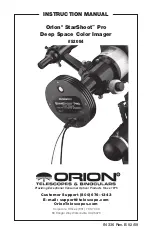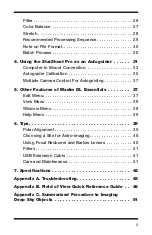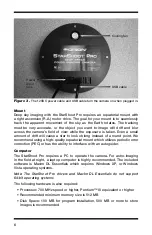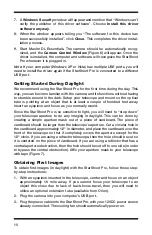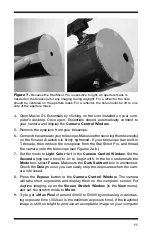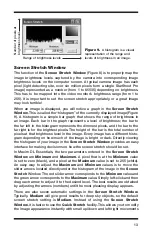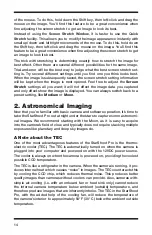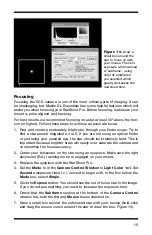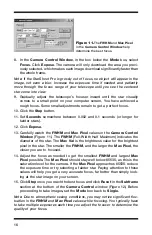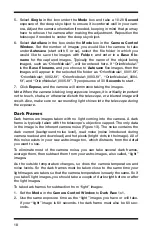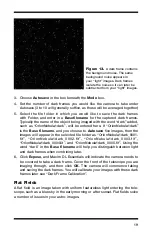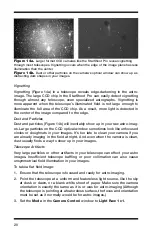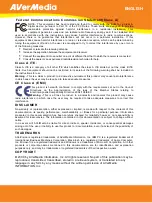
5
If your telescope has T-threads for direct camera attachment, a more secure
connection can be made. First, unthread the nosepiece from the SS Pro. This
exposes the camera’s T-threads. Then, simply thread the camera onto your
telescope (Figure 2b).
The camera requires approximately 0.7" (18mm) of inward focus travel relative to
where a standard eyepiece focuses with your telescope. If your telescope does
not have enough inward focus travel, you will need to use an optional 2" barlow
lens to extend the telescope’s focal plane to the camera’s imaging plane. Some
telescopes (such as refractors) may require the use of an extension tube (avail-
able from Orion) to provide enough outward focus for the StarShoot Pro.
The large 1.8" format imaging chip gives the StarShoot Pro an ample field
of view through most telescopes. See “Appendix B. Field of View Quick
Reference Guide” for a list of the field of view provided by several common
telescopes. The camera’s pixel size and sensitivity make the StarShoot Pro
suitable for most telescopes.
Because the StarShoot Pro uses a larger format CCD chip, a telescope
with a 2" focuser is recommended to for full field illumination.
You can
still use the camera with a 1.25” focuser if it has optional T-threads; however,
some vignetting (edge-darkening) may occur in the images.
Telescope
T-threads
Figure 2a.
The StarShoot Pro fits into a 2" focuser, just like a standard 2" eyepiece.
Firmly tighten the thumbscrew that secures the StarShoot Pro in the focuser.
Figure 2b.
If your telescope has T-threads, remove the nosepiece from the
StarShoot Pro and thread the camera directly onto the telescope. This provides the
most secure connection.
Securing
thumbscrew
2a
2b

